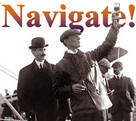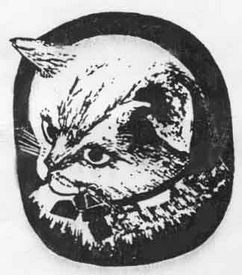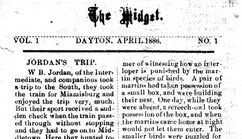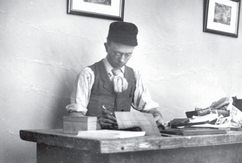|

 Up
Up 
Printing
&
Popcorn

(You are here.)



  Need
to Need
to
find your
bearings?
Try
these
navigation aids:
If
this is your first
visit, please stop by:
Something
to share?
Please:



|
|
Available in Française, Español, Português, Deutsch, Россию,
中文,
日本, and others.
 hen
he was a child, Orville no doubt visited the offices of the Religious
Telescope where his father was editor. It was in a huge four-story
building that housed the Church of the United Brethren's own publishing
company, and it was filled with intriguing machinery that no doubt left
an impression on him. While
he was in grade school, Orville had become interested in the line illustrations in his
father's books and magazines, and the techniques used to make them. Both he
and his brothers Wilbur and Lorin occasionally carved wooden blocks and
made prints from them. hen
he was a child, Orville no doubt visited the offices of the Religious
Telescope where his father was editor. It was in a huge four-story
building that housed the Church of the United Brethren's own publishing
company, and it was filled with intriguing machinery that no doubt left
an impression on him. While
he was in grade school, Orville had become interested in the line illustrations in his
father's books and magazines, and the techniques used to make them. Both he
and his brothers Wilbur and Lorin occasionally carved wooden blocks and
made prints from them.
When the Wrights moved back to Dayton, Orville found that a neighbor and boyhood
friend, Ed Sines, had a small printing outfit. The two went into business
together even though Orville was barely 15 years old. Lorin and Wilbur traded an old boat for a better press
and the Bishop bought the boys 25
pounds of used type. The job printing business quickly took over the summer kitchen at the
Wright home.
One of their first projects was a tiny tongue-in-cheek newsletter
called "The Midget." Its intended audience were Orville's classmates
and its purpose was to advertise "Sines & Wright Job Printers." It
had a rocky start. The Bishop forbade the distribution of the first
edition when he found that the entire second page consisted of the
names Sines & Wright printed twice. He told the boys that this
wasn't fair to their readers, and they dutifully filled the second
page with their own brand of wiseacre journalism. But actual
publication brought the newsletter to a rocky ending. Issue 1 of
"The Midget" included a notice that Issue 2 would contain an article
on "The Inherent Wickedness of Schoolchildren" by Miss Jennings,
Orville's teacher. Miss Jennings had promised nothing of the sort.
Given the quirky sense of humor that Orville displayed in the first
issue of the paper, he no doubt intended to write a satire under his
teacher's byline. However, Orville's academic career was already
under something of a cloud. More than likely the
Bishop deep-sixed "The Midget" to keep Orville from
further trying the patience of his teachers.
In high school, Orville worked two summers as a printer's apprentice to
learn the printing trade. With Wilbur's assistance, he designed and built a
reasonably professional
press from a damaged tombstone, buggy parts, and other recycled odds and ends. By the time his mother died in 1889, eighteen-year-old Orville had decided
to
drop out of school. He had become a skilled printer and his printing business, which he
operated out of the tiny carriage barn at the Wright home, showed promise. And he
had become its sole proprietor. He bought out his original partner and co-founder, Ed Sines, when a local
grocer paid a printing bill with popcorn. Sines wanted to eat the profits; Orville wanted
to sell the corn and buy more type. The dispute was resolved when Orville gave Sines his
share of the popcorn in return for Sine’s share of the business. Afterwards, Ed Sines
became an employee of the Wrights' printing company. He would work for
them off and on until 1899 when they eventually sold the printing
business to the nearby Stevens & Stevens printing company.
|

Wilbur and Orville carved and printed woodcuts from the
time they were children. This woodcut by Wilbur is called "Thomas
Grimalkin". Grimalkin was the cat in the classic "Tom Jones" by
Henry Fielding

Orville's first (and mercifully brief) venture
into journalism, The Midget.

Ed Sines at the imposing table of the Wright printing company. In
the printing business, "imposing" means to set the type into
columns.
|